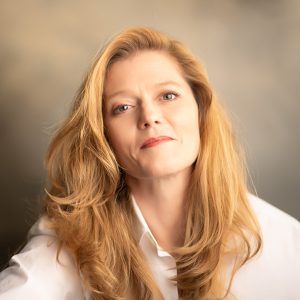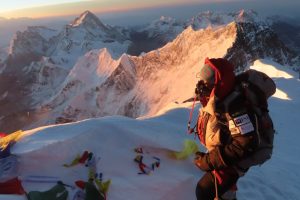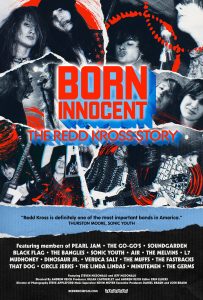A musical tour of Berlin: from Wagner’s epic opera to techno raves | Berlin holidays
Music soundtracks our travels, kills time and distracts, entertainingly. In Berlin, which has more than 300 train stations and where you can see everything panoramically from the overhead S-Bahn, a well-loaded smartphone or MP3 player turns a journey into a film with a score.
I have more records related to Berlin than to any other city. I can’t help feeling the city should have a nexus or mother venue where all the currents cross – a musical equivalent of the mighty Berlin Hauptbahnhof, opened in 2006, a powerful symbol of reunification.
But which artists would play there?
For a child of the 1970s, it would be easy to start, and end, with David Bowie. But Berlin is more interesting than any single artist. The city was on the old German classical music circuit. Weber’s Der Freischütz, considered the first romantic German opera, premiered in 1821 at the Schauspielhaus – known today as Konzerthaus Berlin.
The Berliner Philharmoniker was founded in 1882 and is based at the extraordinary, asymmetrical, tent-like Philharmonie Berlin. The orchestra’s first ever recording, of Wagner’s Parsifal, was conducted by Alfred Hertz in 1913. The hisses and crackles reflect the rudimentary technology; musicians crammed themselves into a tiny room to sit as close as possible to a gigantic recording horn.
The Weimar Republic had its headquarters at the Reichstag, though the mythological narrative wishes it were run from cabarets and dive bars. Tourists search in vain for Weimar decadence, which was short-lived and hugely exaggerated. As for finding the haunts vaguely alluded to in Christopher Isherwood’s novels Mr Norris Changes Trains (1935) and Goodbye to Berlin (1939), as Isherwood said to Bowie: “People forget that I’m a very good fiction writer.”
At the end of 1930, after several moves, Isherwood settled into a flat, at Nollendorfstrasse 17 in the Schöneberg district, which he shared with the British war correspondent Jean Ross, the model for Sally Bowles in his fiction – and, ultimately, the musical – Cabaret.
There were 38 cabarets in Berlin in the early 1920s. Possibly, Isherwood caught a show called Tingel-Tangel that took place in the Theater des Westens (Kantstrasse 12). Marlene Dietrich and Josephine Baker performed there. Berlin’s cabaret songbook is, unsurprisingly, extensive. The most famous entry is Dietrich’s Ich bin von Kopf bis Fuss auf Liebe eingestellt (Falling in Love Again is the English version), recorded in both languages for the 1930 film The Blue Angel, which was shot at the Babelsberg film studio in nearby Postdam. Danish tenor Max Hansen – who founded the Kabarett der Komiker – recorded lots of cheeky show songs, including Meine liebe Lola and War’n Sie schon mal in mich verliebt?, which satirised Hitler as a homosexual.
The Nazis deemed much art and culture Entartete – degenerate. Jewish music was banned. During the 1930s, Lithuanian Hirsch Lewin ran a “Hebrew Bookstore” at Grenadierstrasse 28 (now Almstadtstrasse 10) – the building is still there – and devoted the rest of his time to recording klezmer songs and releasing them on his Semer label. The Nazis trashed his shop and destroyed many of the shellacs and original plates but, in 2016, an international ensemble released a selection of songs on the Berlin-based Piranha label. Scholem Baith is a gutsy call-and-response number that packs as much punch as any Dietrich ditty.
Hitler loved Wagner and hated jazz, experimental music and Romany folk. In studies of Nazi propaganda, an oft-cited song is Swedish-born Zarah Leander’s 1942 hit Ich weiss, es wird einmal ein Wunder gescheh’n (I Know That Someday a Miracle Will happen), recorded at Lindström Studios (Schlesische Strasse 26).
During the Soviet era, East Berlin musicians played it safe to avoid the censor or worse. German easy listening, or schlager, was safe terrain and the DDR’s state-sanctioned Amiga label churned out hundreds of albums full of tunes such as Ilja Glusgal’s 1950 Nein Nein Nein – which you can imagine soundtracking a Stasi raid in a black comedy. The DDR Museum has an extensive collection of albums from the era. As the influence of jazz and big band waned, schlager became cheesier, full of crooners and ersatz country and western acts; it’s sometimes considered the precursor of the kitsch-camp Eurovision shtick. German audiences love it; last year Berlin’s Mercedes-Benz Arena hosted its 25th Schlager Nacht. This year’s “good mood music” festival will fall on 16 November.
The careers of Lou Reed, David Bowie and Iggy Pop crisscrossed time and again. Reed was the first to go to Berlin – mentally speaking. His 1973 album Berlin is about a couple sundered by drug addiction and violence. The title track evokes a bierkeller-cum-cabaret atmosphere. Reed said he thought of the city as the “home of German film noir and expressionism”, but he also saw the Berlin Wall – now memorialised, a museum and an art gallery – as a metaphor for a broken relationship.
Did the concept album inspire David Bowie and Iggy Pop to try the real thing? The former said he went there to get away from LA and cocaine-induced psychosis. The story of how he recorded three landmark albums that would subsequently be grouped as the Berlin Trilogy is long and complex, and many songs from Low (1977), “Heroes” (1977) and Lodger (1979) evoke the city and the cold war east. The title track from “Heroes” (also released in German as “Helden”), with its image of lovers by the wall and guns shooting above their head, has become one of Bowie’s best-loved songs. Low’s Subterraneans was first recorded in Los Angeles for the film The Man Who Fell to Earth (which, in the end, didn’t use his material). He told Record Mirror in 1977 that the song was about those left in East Berlin “after the separation – hence the faint jazz saxophones representing the memory of what it was”.
Iggy Pop’s The Passenger (from 1977’s Lust for Life) may be an ironic commentary on working with Bowie. You can also hear it as a car-ride song, on a “winding ocean drive”. But the German photographer and former partner of the singer, Esther Friedman, told Zeit magazine that it was “a hymn to the Berlin S-Bahn”. Pop “took the S-Bahn almost every day,” she said. “The journeys inspired him to write the song, especially the route out to Wannsee.” Bowie and Pop recorded at the Hansa Tonstudio at Köthener Strasse 38, a few doors south of the Berlin Wall – as this map showing the course of the wall illustrates. Many other artists followed suit, including Depeche Mode, U2 and Boney M.
Also in 1977, the Sex Pistols made a brief trip to Berlin, which inspired their frenetic single Holidays in the Sun. There were no lovers kissing by the wall in the Berlin of Johnny Rotten (AKA John Lydon) – the song opens with the sound of marching jackboots and the line “A cheap holiday in other people’s misery”. Lydon later said: “I loved Berlin. I loved the wall and the insanity of the place. The communists looked in on the circus atmosphere of West Berlin, which never went to sleep.”
Nico, who worked with Reed on the first Velvet Underground album, played her last concert at West Berlin’s Planetarium in June 1988. Born Christa Päffgen in Cologne, she grew up in Berlin and sold undies at the KaDeWe department store. Nico is buried in the Grunewald-Forst cemetery.
Berlin’s underground in the 1970s and 80s ranged across DIY arts scenes, squatter activism and junky culture – with heroin users congregating in Bahnhof Zoo (as seen in the 1981 cult film Christiane F, soundtracked by Bowie). Tangerine Dream was one of the most enduring bands (despite regular lineup changes) to come out of the scene. They played huge concerts in West Berlin and became one of the first big-name acts to play in East Berlin. Their 31 January 1980 gig at the Palast der Republik, the home of the DDR parliament (since demolished), was heavily bootlegged.
Radical music, attuned to Berlin’s ruinous wasteland, would come from Einstürzende Neubauten, the West Berlin industrial/experimental rock band whose lead singer/screamer is Blixa Bargeld – a key member of both the Bad Seeds and the Birthday Party. Steh auf Berlin (Wake Up Berlin), from their debut album Kollaps, is a classic piece of trash-thrash noise performed on anti-instruments made from scrap metal and building tools.
Easier on the ear was the punky synth-pop that came out of Neue Deutsche Welle (NDW) – the New German Wave. Nena’s 99 Luftballons, an international hit in English, was its mainstream zenith. I remember a friend unveiling a Dutch compilation album titled Die Neue Deutsche Welle Ist Da Da Da in 1982 that I thought the ultimate in transgressive imported coolness. A lot of the music on the album sounds like Kraftwerk speeded up and made pogo-able, or at least suitable for that Andy McCluskey skipping dance. Some of the best Berlin-based NDW, punk and metal bands were mixed by Harris Johns at his studio Music Lab Berlin studio in the back yard of Tempelhofer Ufer 10.
A lot of venues have come and gone, Kreuzberg’s SO36, where Einstürzende, as well as Die Toten Hosen, Throbbing Gristle and the Dead Kennedys ran amok, is still standing, though I can’t see Bargeld turning up for the Monday rollerdiscos. The club’s Gayhane, a monthly “QueerOriental Dancefloor” night, is legendary.
Tresor, which opened in 1991, was one of the first clubs to bring Detroit techno to the city and continues to host big-name DJs. Berghain, another big club, occupies a former power station off monumental socialist boulevard Karl-Marx-Allee. The former Templehof airport, built in the modernist-meets-monumental style favoured by the Third Reich, used to host raves. Berlin’s zero-curfew rule, said to have its roots in West Berlin’s liberal attitudes to nightlife, makes it a draw for techno tourists. Detroit-born DJ Rolando keeps up the transatlantic alliance; his remix of Expo 2000 pays homage to Düsseldorf-based Kraftwerk, whose influence on many of the above-mentioned acts has been well documented. Berghain resident Ben Klock’s Subzero sounds like a retro-futuristic train on tracks of ice and is a perfect way to end our S-Bahn odyssey.





